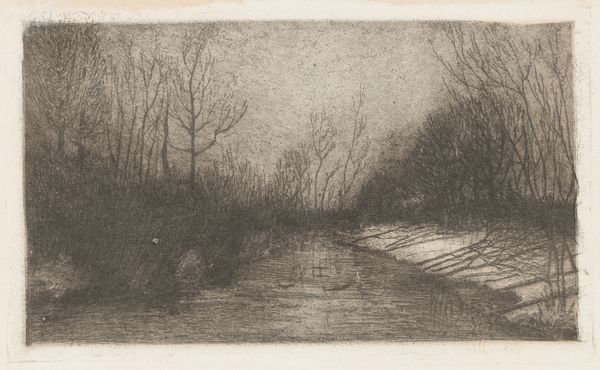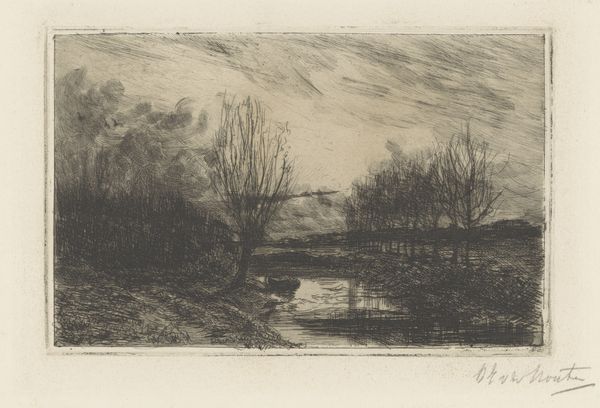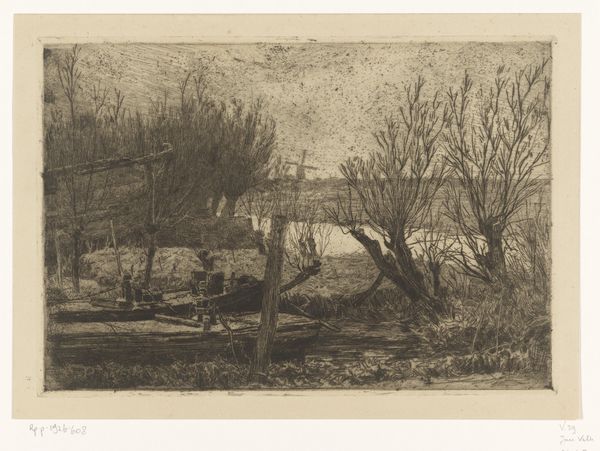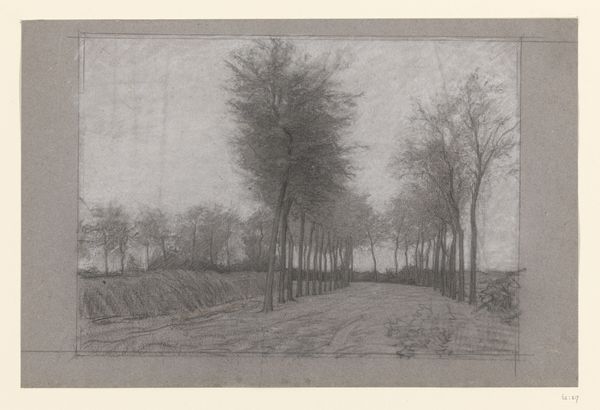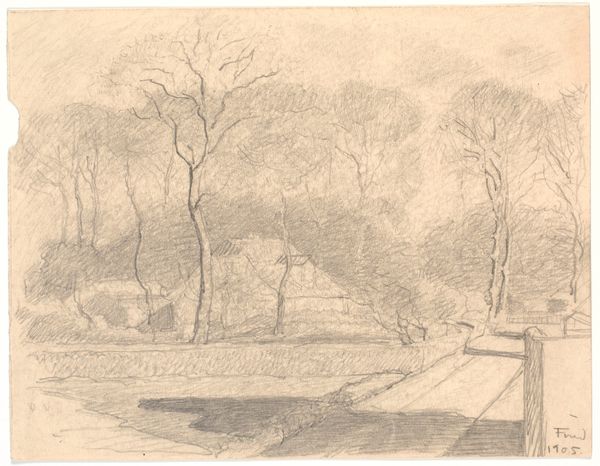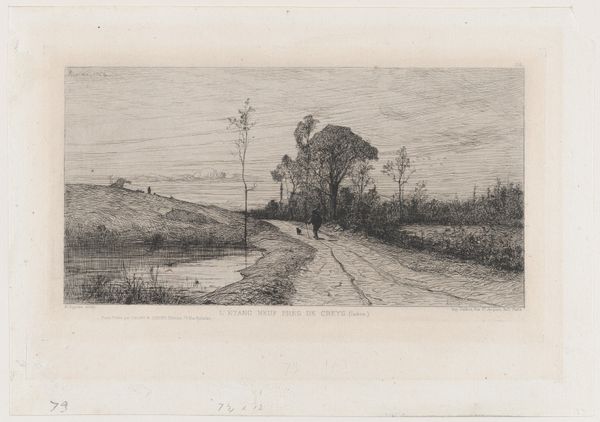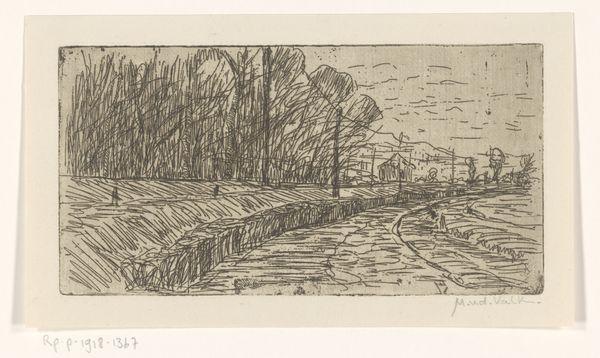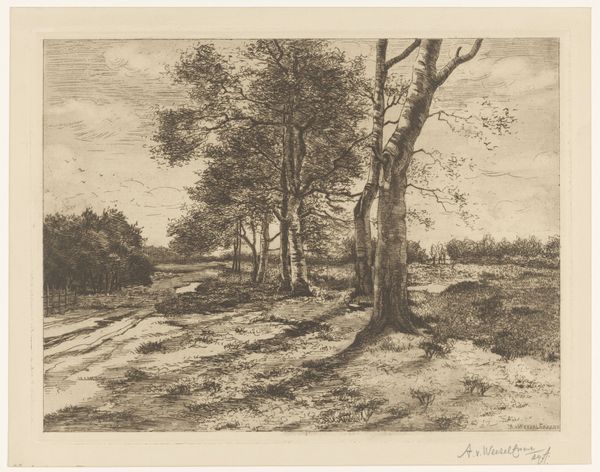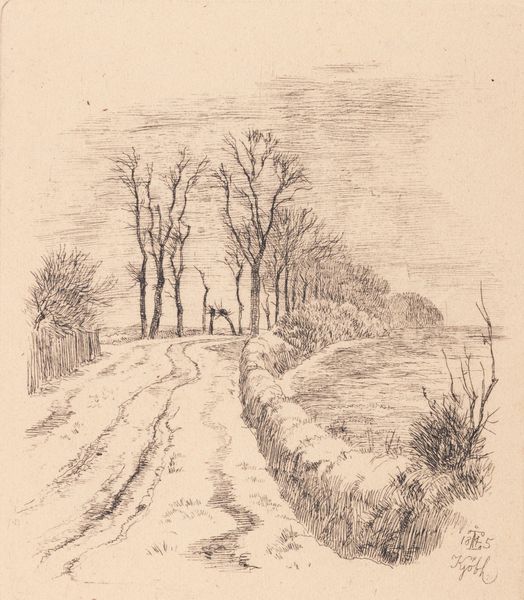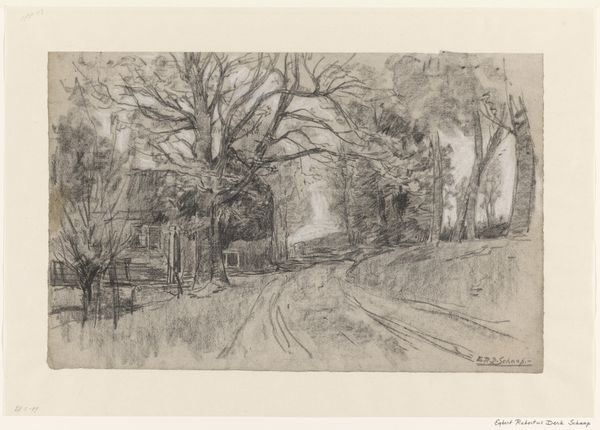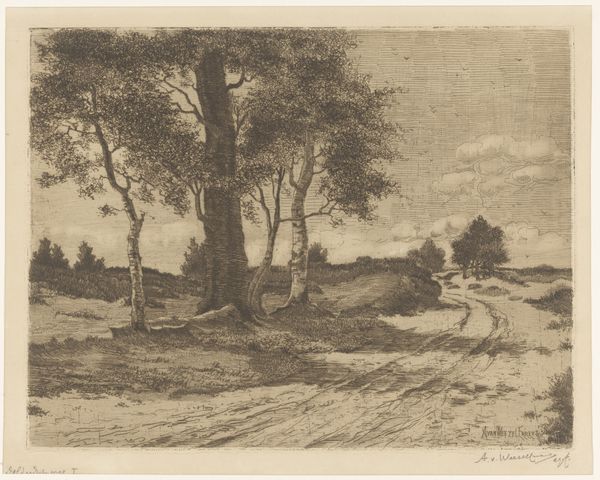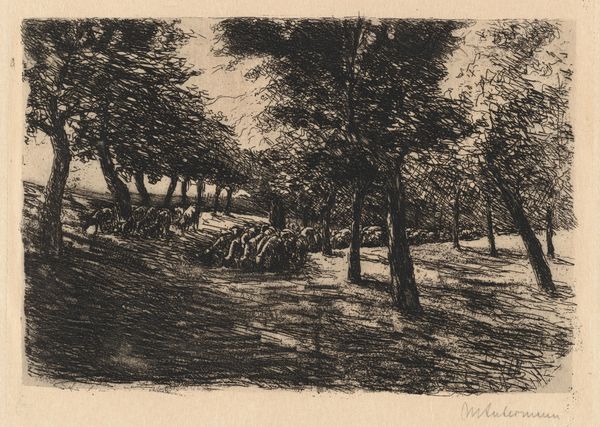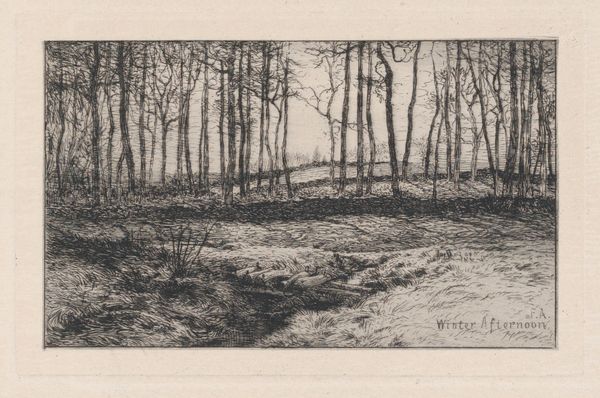
Dimensions: plate: 14.9 × 24.7 cm (5 7/8 × 9 3/4 in.) sheet: 26 × 35.2 cm (10 1/4 × 13 7/8 in.)
Copyright: National Gallery of Art: CC0 1.0
Editor: Here we have Vittore Grubicy's "Winter Evening" from 1893-94, a delicate etching that evokes a sense of quiet desolation. What jumps out to me is how the artist manages to create such a still, almost melancholic, atmosphere. What do you see in this piece, particularly considering the social context of its time? Curator: I see more than just melancholy. I see a visual representation of the late 19th century's socio-political landscape reflected in nature. Grubicy, deeply involved with social reform, uses the stark winter scene, I believe, as a metaphor for the harsh realities faced by the working class. The barren trees and the seemingly frozen river reflect the social stagnation and the lack of opportunity many experienced. What do you make of the absence of people within this landscape? Editor: That's interesting, I hadn’t considered that perspective. I suppose their absence emphasizes the sense of isolation, maybe even the societal invisibility of certain groups. But is it possible that we are over-interpreting a landscape, applying our contemporary understanding of social issues onto something that might simply be a depiction of winter? Curator: Perhaps. But remember, art is never created in a vacuum. Grubicy was not only an artist, but also an outspoken activist. His work often served as a critique of societal structures. Consider how Impressionism, with its focus on fleeting moments and light, was already a radical departure from academic painting. Then think about how Grubicy channels this movement through the lens of social consciousness. Can we truly separate form from the socio-political forces that shape artistic production? Editor: So, you’re saying that even in a seemingly simple landscape, we can find layers of social commentary. That’s definitely given me a lot to think about regarding the relationship between art and activism in this period. Curator: Exactly. It invites us to ask, whose winter evening is this, really? Whose experiences are being reflected, and whose are being erased? Hopefully, it encourages us to reconsider what landscape painting, or any art, can tell us about power, identity, and representation.
Comments
No comments
Be the first to comment and join the conversation on the ultimate creative platform.
